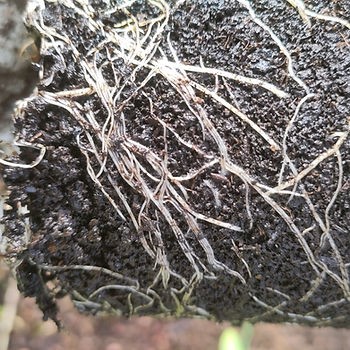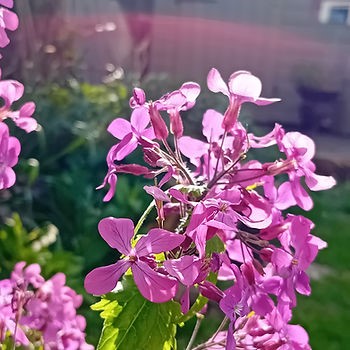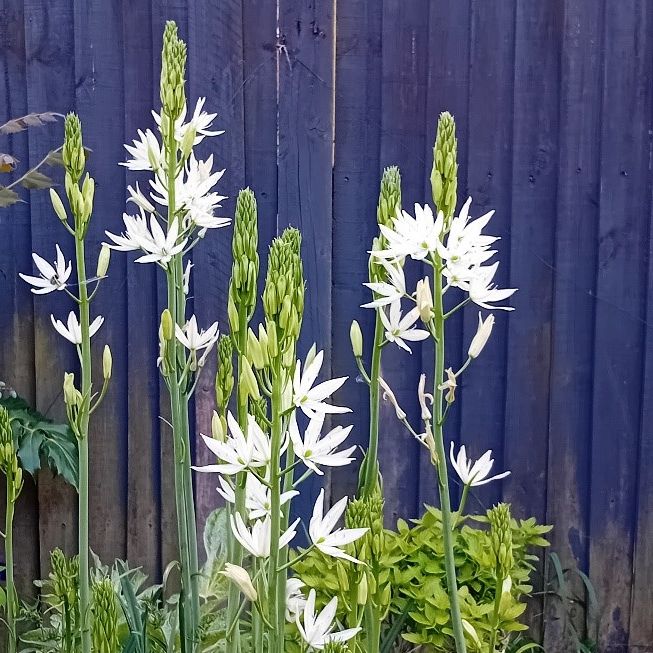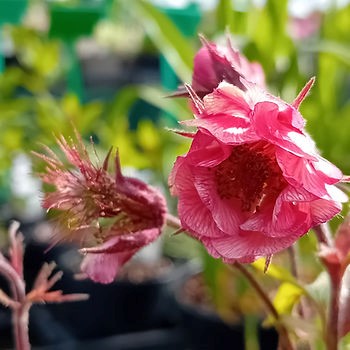Emerging from a wet winter
The winter of 2024 felt like it was an unrelenting slog through mud didn’t it? The rare days were there wasn’t rain were marked by being overwhelmingly grey days. Even the frosts were few and far between. It was a marked contrast to the winter of 2023 when we experienced sudden, deep penetrating frosts early in the winter.
What was the weather like?
According to the Met Office, we had the warmest February on record in England and Wales – with temperatures in the southern part of England more than 3ºC above the long-term average. It’s also been wetter and duller than average winter, with reservoirs refilling and ground level waters being high.
For each 1ºC of warming, our atmosphere can hold roughly 7% more moisture. Let’s not forget that we live on an island surrounded by water. As the winters warm, the skies above us can hold more water. So, when we do get rain, there is likely to be more of it.
Now we are into early summer, it’s time to assess how our gardens have responded to the weather.
How did our plants do?
As I always tell clients, plants don’t read labels: they respond to the weather cues around them, whether that’s the vernalisation, (a long word meaning being stimulated by frost) longer days or warmer ground temperatures.
Now, as we all know, each garden is different. And within our gardens there are any number of micro-climates, each with a potentially different soil, aspect and drainage profile.
But there are some general themes I’ve noticed this winter, and comparing notes using my professional network of grubby handed green-thumbed folk, I’ve concluded the following:
The lack of bright clear skies reduced the speed of top-growth on a lot of herbaceous plants. Lack of bright daylight equals a slower rate of photosynthesis. So some plants tended to be slow to get going and put on leafy growth. Root-growth, on the whole, seemed to be unaffected.

It was a good winter to get bare rooted trees and shrubs planted, if you could avoid walking or using machinery on the soil.
The winter wet has – in general terms – been good for those evergreen plants that have continued to grow throughout in the warm temperatures. Many geraniums have remained evergreen in the warm winter spell, and are bulking up considerably. In one of my gardens they were at risk of overwhelming a rose bed with leafy growth, so we instigated a very early Chelsea chop!
Plants that formed flower buds in the relative cool and wet of last summer – like camellias – put on a spectacular display.
Biennials again performed very well, with brilliant displays of Lunaria annua (Honesty) in hedgerows and gardens. The foxgloves were also looking superb. My pet theory is because biennials are so active in the shoulder months (spring and autumn), they avoid the extremes of having to perform in the high summer months; and so are more resilient to the vagaries of the weather in high summer.

Lunaria annua – for a “glow up”, try Lunaria annua ‘Chedglow’ with its dramatic purple stems.
Some absolute “stalwarts” of the drier, chalky cottage garden – like Achillea, Nepeta and Salvias – have suffered. As we know these plants like to be on very well drained soil. But even the most well-drained soil this year has had to cope with a large “throughput” of water from above. The groundwater table has also been higher, which has also contributed to additional moisture in the soil profile and in the surrounding air. These factors combined seem to have caused some Salvia (particularly the S. nemarosa) and some Nepeta to be more prone to failure through root rot.
That brings us to slugs! They have really lived their best life this year. Many clients have sobbed over the ruins of Delphinium and Dahlia reduced to expensive lace-like stubs of plant leaves. The warm weather coaxed the slugs into early and prolific breeding, and therefore feeding. There is no bullet proof way to protect plants from slugs, but my top tips are available on a special radio broadcast dedicated to dealing with them. If you are beyond despair, try Baptisia over Lupin and look at what has been left well alone by the munching molluscs, like Geranium, Geum and Tellima grandiflora.
Bulbs were a mixed bag, with tulips and daffodils suffering while Fritarillia and Camassia thriving. I know Camassia is supposed to like moisture, but I’ve also grown it with benign neglect in a pot for 3 years and it’s still going strong.

Camassia leichtlinii ‘Alba’
Many winter garden stalwarts were spectacular. I’ve had nearly 6 months of continuous flowering from Hellebores. Helleborus ‘Viv Victoria’ and ‘Magic Aubergine’ were particularly strong performers. The dogwood genus seems to continue to cope with whatever amount of winter is flung at it. Ipheion also won hearts and minds, with mine flowering for months. Plant where you can appreciate their tender beauty near a kitchen window sill, preferably where the low winter-light can backlight their delicate petals.
The warmer weather coaxed some plants to flower even earlier than usual. I spotted a Geum in full throttle on 18 March in Devon!

Geum ‘Bell Bank’
What does this tell us about our future gardening choices?
The long-range predictions for the UK’s climate can be broadly summarised: as warmer and wetter winters; hotter and drier summers with sudden downpours in summer; and stronger wind events throughout.
It doesn’t sound like a lot of fun when put it like that.
However, as ever, there are opportunities within the disappointments. I’m going to experiment with different cultivars of Nepeta (‘Walker’s Low’ seems to have outperformed ‘Six Hills Giant’ according to some) and the ptarmica forms of Achillea have done better than the straight genus. I’m going to double down on my use of Camassia as a joining plant between spring bulbs and the summer cottage palette. And the longer cultivation window means more growing opportunities across the year.
It's also a great reminder that no garden year is ever the same. We are all constantly learning and responding alongside our plants, and as our climate changes the benefits of sharing our knowledge and experience are even more apparent to see.
Claire Mitchell is the Garden Editor and runs a sustainable garden service. She can be found at www.gardeneditor.co.uk
Image of Claire by Ewa Jones Photography
